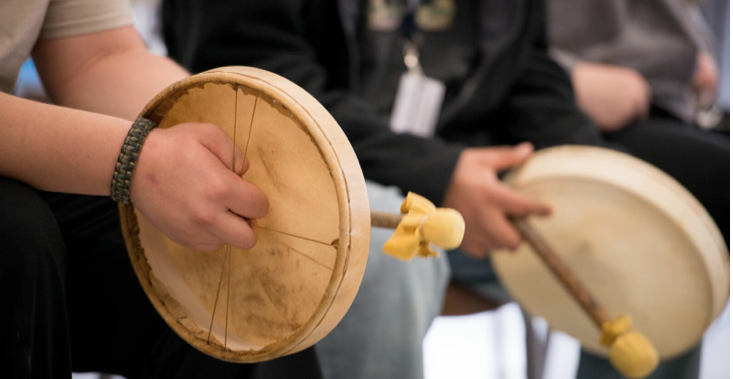1. What is self-identification?
It is a voluntary and confidential online process to identify as an Indigenous student at Nipissing University. Self-identification helps the Office of Indigenous Initiatives to provide effective services and supports, and to measure the success of our efforts.
2. Why self-identify?
To connect with the Indigenous community on campus by being included in regular communication. Help the Office of Indigenous Initiatives gain a greater understanding of students on campus and provide effective programs and services.
Note: Students may access services offered by the Office of Indigenous Initiatives with or without self-identification.
3. How do I self-identify?
There are three times that you will be invited to self-identify as an Indigenous student:
- Application: Through the Ontario University Application Center (OUAC) application.
- Registration: On your Nipissing University student WebAdvisor account.
- Admission: When applying to Nipissing’s specialized programs, including the Aboriginal Advantage Program (AAP), Aboriginal Teacher Certification Program (ATCP), and Native Classroom Assistant Diploma Program (NCADP).
4. How will the information be used?
The Registrar’s Office will oversee the data collection and storage. All data will be securely stored to respect privacy and used only as a means to enhance programs and services in the Office of Indigenous Initiatives and elsewhere in Nipissing University as authorized by the student. As per the Freedom of Information and Protection Privacy Act, the information will be used in aggregate (without personally identifiable information) only and for the purpose of developing and implementing supports and programs. The university will only disclose your personal information to a third party, such as the Ministry of Training, Colleges and Universities, if required by law and only after student confirmation.
For more information on privacy, please visit the following links.
Nipissing University Privacy Statement
(Policy on Student Records, Storage and Retention, Access and Disclosure of Information)
Office of the Information and Privacy Act of Ontario
Freedom of Information and Protection of Privacy Act of Ontario
5. Who will see my information?
The Office of Indigenous Initiatives, Registrar’s Office, and additional departments within the institution as authorized by the student.
6. Do I have to prove my Aboriginal ancestry?
No, proof of ancestry is not required to self-identify with Nipissing University. However, specific bursary and scholarships may require proof of ancestry.
7. I already self-identified, do I need to again?
You only need to self-identify once and you can withdraw at anytime. You may want to self-identify using the new system and options provided. NOTE: If you choose to withdraw, all previously reported information (e.g. number of Indigenous student enrollment) cannot be changed. However, all future reporting will reflect changes.
8. Is this discrimination?
No, it is a necessary and important step to creating an inclusive on-campus community.
9. What happens if I choose to remove my information?
You can change or withdraw your information at any time by logging into your Nipissing University WebAdvisor account and selecting "Voluntary Indigenous Student Self-Identification" under the USER ACCOUNT menu item. When you change or remove your information, any previously reported numbers cannot be altered however any subsequent reports will reflect the changes you made. If you selected to share your name and email with one or more of the department options provided, and choose to change your selections, the changes will be reflected at the beginning of the following semester.
10. What if I already self-identified prior to September 2015, should I self-identify again?
Yes. If you have self-identified previously through WebAdvisor, you are encouraged to go through the process again and review the new information and options available.



